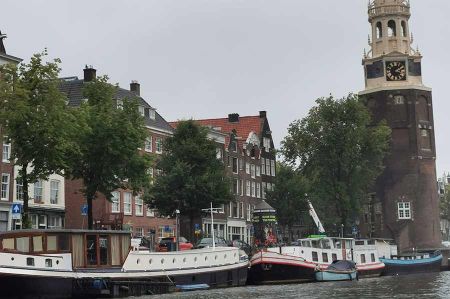Visit to the Anne Frank House in Amsterdam
- Written by Portal Editor
Anne Frank House - Who doesn't know that the world's most famous diary was written by the girl Anne Frank in her hiding place in a secret annex in Amsterdam and which became world famous after her murder.
It shows quite clearly the forced life of secrecy, the fear of discovery and the fate of the many persecuted people during the Nazi era. Do we actually need to drift further to the right today before the majority of people actually wake up because they have once again fallen for the charlatans of right-wing populism and contempt for humanity?
With the e-bike to the Anne Frank House Prinsengracht
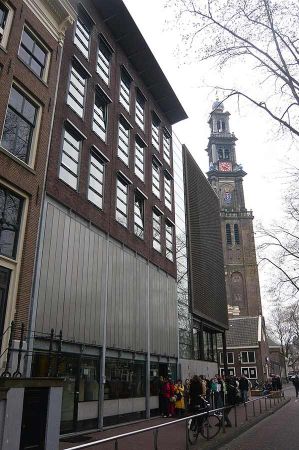 For this tour into the city centre of Amsterdam we also want to use our bikes on the excellent cycle path network and despite the rain showers. Today, the former refuge of the Frank family, or rather the hiding place, is probably the most famous museum in Amsterdam and a long queue regularly forms in front of the house in which the Frank family once had to hide. Pre-booking is highly recommended here, as we were able to experience.
For this tour into the city centre of Amsterdam we also want to use our bikes on the excellent cycle path network and despite the rain showers. Today, the former refuge of the Frank family, or rather the hiding place, is probably the most famous museum in Amsterdam and a long queue regularly forms in front of the house in which the Frank family once had to hide. Pre-booking is highly recommended here, as we were able to experience.
You could almost miss the Anne Frank House, so inconspicuous is the narrow house in the western Jordaan district of Amsterdam, right on the canals. But you become aware of it when you see the long queues of people at the house, even during a boat tour. The house at Prinsengracht 263 - like the building next door at number 265, which was later purchased by the museum - was built in 1635 by Dirk van Delft. The current facade on the canal side was created during a renovation in 1740, when the rear extension was demolished and replaced by today's larger extension. The house was originally a private residence and later a warehouse. In the 19th century, horses were housed in the front part with its wide, stable-like doors. At the beginning of the 20th century, a manufacturer of household goods moved into the building. He was followed in 1930 by a producer of piano rolls, who gave up ownership in 1939.
Opekta and Pectacon – Otto Frank companies move in
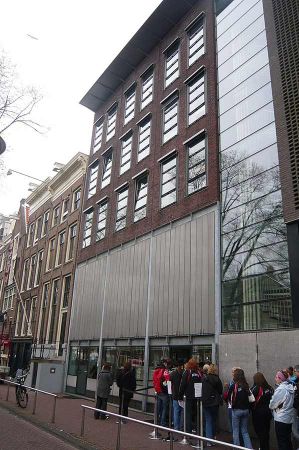 On December 1, 1940, the companies Opekta and Pectacon, led by Anne Frank's father Otto Frank, moved from the Singel to Prinsengracht 263. The ground floor consisted of three parts. At the front there was the warehouse and the supplier entrance, behind it were the spice mills and in the back the warehouse where the goods were packed for trade. On the first floor were the offices of Frank and his employees: Miep Gies, Bep Voskuijl and Johannes Kleiman in the front, Victor Kugler in the middle and Otto Frank himself in the back.
On December 1, 1940, the companies Opekta and Pectacon, led by Anne Frank's father Otto Frank, moved from the Singel to Prinsengracht 263. The ground floor consisted of three parts. At the front there was the warehouse and the supplier entrance, behind it were the spice mills and in the back the warehouse where the goods were packed for trade. On the first floor were the offices of Frank and his employees: Miep Gies, Bep Voskuijl and Johannes Kleiman in the front, Victor Kugler in the middle and Otto Frank himself in the back.
The secret annex is protected from view from the street by other houses on all four sides, which made it a suitable hiding place for eight Jewish people during the time of German occupation and persecution of Jews: in addition to Otto Frank and his wife Edith Frank-Holländer, the two of them Children Margot and Anne, Hermann and Auguste van Pels with their son Peter and Fritz Pfeffer. They lived in darkened rooms in around 50 square meters for over two years and a month. Anne Frank described this in great detail in her diary. The hidden people could only come into the front building in the evenings and on weekends, when the company's employees had left the building.
Anne Frank House - The Frank family is found and deported
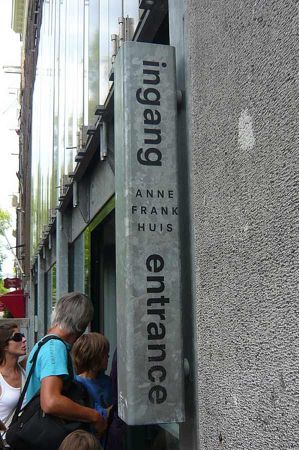 But when the Netherlands surrendered to the German army, the systematic persecution of Jews began there too. Anne Frank and her family were initially able to hide in that secret annex.
But when the Netherlands surrendered to the German army, the systematic persecution of Jews began there too. Anne Frank and her family were initially able to hide in that secret annex.
Eventually they were betrayed and arrested and deported by the German Gestapo on August 4, 1944. All family members except father Otto Frank died.
The hiding place was then “pulsed”; The confiscated clothing, furniture and personal items were sold in the Netherlands or distributed to bombed-out families in Germany.
However, Miep Gies and Bep Voskuijl were able to save, among other things, Anne Frank's diary before the eviction.
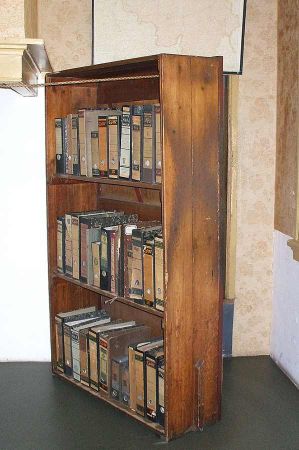 Shortly after the publication of Anne Frank's diary, the first visitors arrived, and the employees who had helped the Frank family gave them private tours of the rooms that had previously served as hiding places. In 1954, after the Opekta company moved, the entire block was sold to a real estate agent who wanted to demolish the houses in order to build a factory on the site. On November 23, 1955, the Dutch newspaper Het Vrije Volk launched a campaign to preserve the house and register it as a monument. On the day of the planned demolition, campaign representatives protested in front of the house and secured enforcement protection. In 1957, the owner at the time, a coat factory, transferred the house to the Anne Frank Foundation, newly founded by Otto Frank and Johannes Kleiman on May 3, 1957, as a sign of goodwill. With the donated funds released, the foundation then bought the neighbouring building No. 265. The hiding place remained unchanged in its original condition.
Shortly after the publication of Anne Frank's diary, the first visitors arrived, and the employees who had helped the Frank family gave them private tours of the rooms that had previously served as hiding places. In 1954, after the Opekta company moved, the entire block was sold to a real estate agent who wanted to demolish the houses in order to build a factory on the site. On November 23, 1955, the Dutch newspaper Het Vrije Volk launched a campaign to preserve the house and register it as a monument. On the day of the planned demolition, campaign representatives protested in front of the house and secured enforcement protection. In 1957, the owner at the time, a coat factory, transferred the house to the Anne Frank Foundation, newly founded by Otto Frank and Johannes Kleiman on May 3, 1957, as a sign of goodwill. With the donated funds released, the foundation then bought the neighbouring building No. 265. The hiding place remained unchanged in its original condition.
Enlightenment and awakening - never again the Holocaust
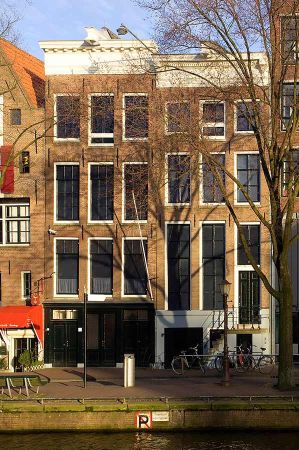 Above all, the Anne Frank House wants to educate and awaken people, because something like the Holocaust should never happen again. The fate of the girl, who was only 15 years old, is just one of many.
Above all, the Anne Frank House wants to educate and awaken people, because something like the Holocaust should never happen again. The fate of the girl, who was only 15 years old, is just one of many.
Numerous school classes visit the Anne Frank House every day and are moved by Anne's diary. Educational work and work with young people are important to the museum. There is a special teacher portal with special materials and information and guided tours are offered for young people
The Anne Frank House is divided into two areas. At the front is the museum, which contains permanent and special exhibitions. They show the history of the Holocaust as well as the emergence of National Socialism.
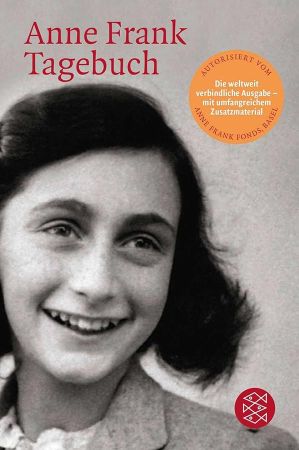 Anne Frank and her diary are also discussed in detail. The rear building forms the other area of the Anne Frank House. The Frank family was hiding here.
Anne Frank and her diary are also discussed in detail. The rear building forms the other area of the Anne Frank House. The Frank family was hiding here.
To this day, the rooms have largely been preserved in their original form as a memorial.
You can also quickly reach the Anne Frank House from the main train station by turning west into the Jordaanviertel.
Many canal cruises also start and end directly at the museum, so you can get off from any boat stop and visit the Anne Frank House.
Our recommendation: take your time and look at the exhibition and Anne's hiding place in peace.
To the Anne Frank House in Amsterdam - more details
A Journey into the Past
Sometimes travel not only leads to new places, but also deep into history. A visit to the Anne Frank House in Amsterdam is just such a journey – intense, moving, and unforgettable.
Why the Anne Frank House is so important
It is a place of silence, remembrance, and warning. Anne's story reminds us of what must never happen again.
A history that touches and awakens
Here, history is not told – it is felt. Every room, every wall breathes the past.
Where is the Anne Frank House?
Central location in the heart of Amsterdam
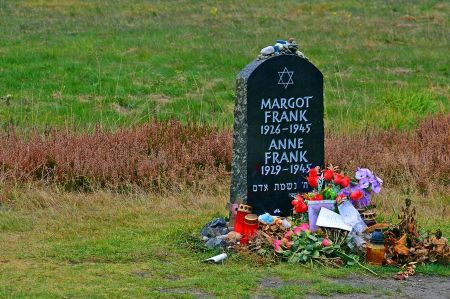 Located directly on the beautiful Prinsengracht canal, the Anne Frank House is hardly noticeable due to its simple facade – yet it houses one of the most powerful stories of our time.
Located directly on the beautiful Prinsengracht canal, the Anne Frank House is hardly noticeable due to its simple facade – yet it houses one of the most powerful stories of our time.
A historic building full of stories
House number 263 served as a refuge from Nazi persecution for the Frank family and other people in hiding. Anne Frank's Life – A Brief Overview
Childhood and Escape from Persecution
Born in Frankfurt am Main, Anne fled with her family to Amsterdam to escape the persecution of the Jews – but the threat caught up with her there too.
Life in Hiding
For two years, Anne lived in the Secret Annex – imprisoned, full of hope and fear at the same time.
The Diary of Anne Frank
Words that went around the world
In her diary, Anne recorded her experiences, fears, and dreams – creating a unique testimony.
Symbol of Hope and Humanity
Despite the dark times, Anne maintained an astonishing optimism – a ray of light in the dark night.
Visiting the Anne Frank House
The Entrance – The Path to Another Time
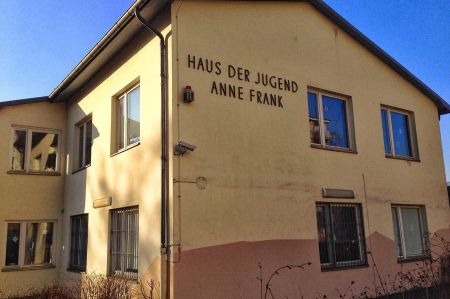 As soon as you enter, you feel: Here you are entering another world, a world of perseverance and quiet resistance.
As soon as you enter, you feel: Here you are entering another world, a world of perseverance and quiet resistance.
The Secret Annex – Cramped Hope
Narrow stairs, small rooms, dim lighting – the confined space is almost physically palpable.
The Exhibition – More Than Just History
Multimedia Impressions and Personal Items
Films, original documents, eyewitness accounts – the exhibition brings the past to life.
Letters, photos, and memorabilia
Each exhibit tells its own little story – together they create the bigger picture.
The Famous Diary – Original and Impact
A Small Book with a Big Impact
Anne's diary is known worldwide and still touches millions of people today.
Why Anne's Words Are More Relevant Today Than Ever
In a world often characterized by division, Anne's words are a reminder of compassion and humanity.
Emotional moments during a visit
What particularly moves visitors
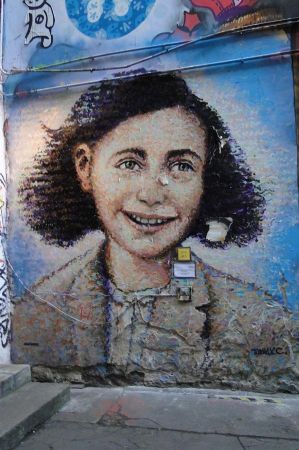 Many visitors report being deeply moved by the sight of Anne's photos and the small desk.
Many visitors report being deeply moved by the sight of Anne's photos and the small desk.
Silence as a language of remembrance
Here, the rooms speak – and the silence becomes a powerful reminder.
Practical tips for your visit
Tickets and opening hours
Tickets should definitely be booked online in advance – they are often sold out weeks in advance!
The best time to avoid waiting times
Early mornings or late evenings are ideal for experiencing the house in peace.
Other memorials in Amsterdam
The Jewish Historical Museum
Tells the story of the Jewish community in the Netherlands – moving and comprehensive.
The Hollandsche Schouwburg Memorial
Once a theater, now a memorial to the victims of the Shoah.
Why the Anne Frank House affects everyone
Remembrance as a responsibility
Remembrance is not a question of origin – it is a task for all of us.
History must not be forgotten
Only those who remember can prevent history from repeating itself.
Activities around the Anne Frank House
Strolls through the Jordaan district
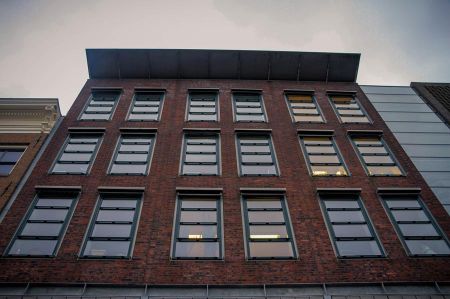 Small alleys, creative shops, and a touch of nostalgia make this district special.
Small alleys, creative shops, and a touch of nostalgia make this district special.
Canal Cruises – Amsterdam from a New Perspective
After an intensive visit, a relaxing boat trip offers a welcome change.
Culinary Breaks Nearby
Cozy Cafés and Restaurants
Whether traditional Dutch or international – the offerings around the Anne Frank House are diverse.
Try Local Specialties
Stroopwafels, Bitterballen, or a hearty Haring – Amsterdam tastes delicious and diverse.
Conclusion – A Visit That Gets Under Your Skin
A visit to the Anne Frank House is more than just a tourist activity – it's an emotional journey that will change you forever. Anne Frank's voice remains – a constant reminder of what really matters: humanity, courage, and hope.
FAQs about the Anne Frank House
1. Can I take photos in the Anne Frank House?
No, photography is prohibited out of respect for history.
2. How much time should you plan for your visit?
At least 1.5 to 2 hours to fully experience the exhibition and the Secret Annex.
3. Are there guided tours of the Anne Frank House?
Audio guides are available, but no traditional tours to maintain a calm atmosphere.
4. Can you buy tickets spontaneously?
Spontaneity is difficult – online booking is strongly recommended.
5. Is the Anne Frank House wheelchair accessible?
Parts of the exhibition are wheelchair accessible, but unfortunately, the historic Secret Annex is not.
Westermarkt stop: tram 13, 14, 17 and buses 170, 172, 174
Prinsengracht 263-267, 1016 GV Amsterdam
Please read as well:
The health-promoting spoonful of honey in the morning
Archaeological Excavations of the settlement of Siculi in 2015
